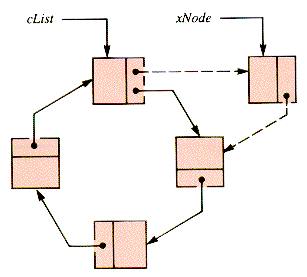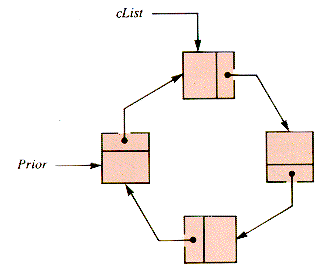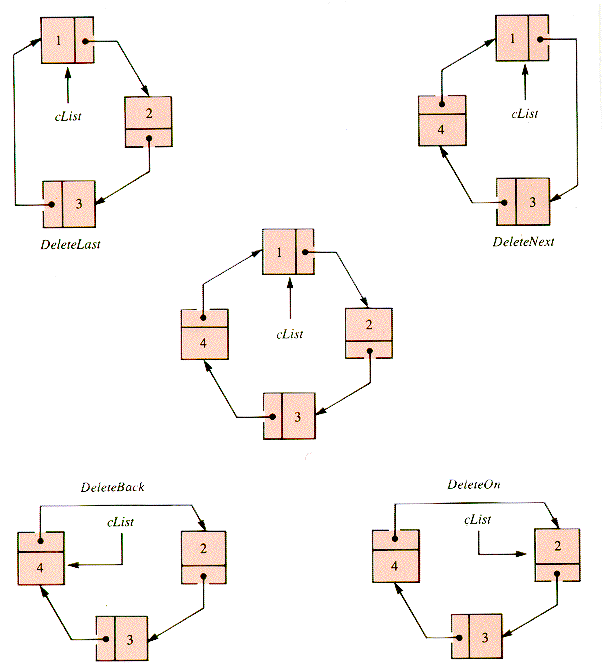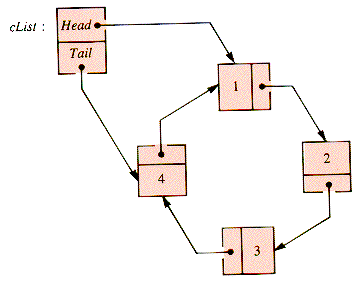procedure RoundOut(cList) {O(n)
if Empty(cList)
then {deal with this error
else Display(cList) {PROCESS0
pcList
.Link {PROCESS0
while pcList do
Display(p) {PROCESS2
pp
.Link
endwhile
endif
end {RoundOutAdditions to a circular list, cList, can take place most easily if the new node is to follow immediately after the node distinguished by the pointer cList, as shown in Figure C.1.

Figure C.1
The insertion routine is straightforward:
procedure InsertAfter(cList,xNode) {O(1)
if Empty(cList)
then xNode.Link
xNode
cListxNode
else xNode.Link
cList
.Link
cList.Link
xNode
endif
end {InsertAfterWhen a single list identifier, cList, is used, and a node is to be added prior to it, then it is necessary to locate the node that points to cList, say Prior, and then apply InsertAfter(Prior,xNode), as shown in Figure C.2.

Figure C.2
The location logic is a simple version of LT (section 3.3.2):
PriorcList
if NOT Empty(cList)
then pcList
.Link
while pcList do
Priorp
pp
.Link
endwhile
endif
Deletion in the vicinity of cList can take several forms. In particular, the node cList  .Link (if it exists) can be readily deleted. So can cList; in Figure C.3 the cList pointer value can move forward or backward relative to the link directions.
.Link (if it exists) can be readily deleted. So can cList; in Figure C.3 the cList pointer value can move forward or backward relative to the link directions.

Figure C.3
Some combinations of insertion and deletion operations define formal structures in common use. Of particular interest is the circular queue, discussed in Chapter 5 :
A circular queue: InsertAfter(cList,xNode)
DeleteBack(cList)
The form taken by DeleteNext is simply:
procedure DeleteNext(cList) {O(1)
if Empty(cList)
then {deal with this error
return
endif
if cList.Link = cList
then cListNIL
return
else NextcList
.Link
cList.Link
Next
.Link
endif
end {DeleteNextA deletion procedure such as DeleteBack is awkward unless the pointer Prior is available. Such a pointer can be made available by a change to a two-window system, as shown in Figure C.4.

Figure C.4
With the window-pair system, circularity appears to be specious. Nevertheless, circular lists defined with a pair of pointers turn out to be useful when they are maintained in a single array. Routines designed to maintain the single array, specialized to the structure QUEUE, are treated in section 5.3.
Details of the other deletion procedures are left to the exercises.
Exercises
Exercises immediate applications of the text material
EC.1 When insertion prior to cList is made to an empty list something must be done after the search logic and InsertAfter(cList,xNode) of section 3.7 to properly prepare for later insertions. What is it?
Problems not immediate, but requiring no major extensions of the text material
PC.1 Develop the procedure DeleteOn.
PC.2 Develop the procedure DeleteBack.
PC.3 Develop the procedure DeleteLast.
Problems


